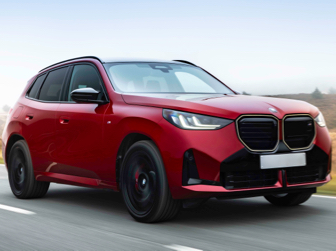No matter how prepared you are, especially for those who frequently run errands in a business vehicle, you’re always exposed to the risks of highjacking and car theft. Most of all, this is especially true if you have a specific type of vehicle (in this case a discontinued model) that they’re looking for - whether it’s to resell, travel across the border, or strip for parts.
High-risk vehicles that are popular with hijackers
It’s not just the vehicle that hijackers target; the type of driver also plays a role. While smash-and-grab incidents and hijacking techniques are not new, these crimes are increasing rapidly, particularly in urban areas like Johannesburg and Cape Town. Car-related crimes have become more sophisticated, making them difficult to anticipate.
One area of focus is understanding the risks that come with owning a vehicle that might be on their hit list.
The reality of car theft and hijackings in South Africa
In 2024, reports showed a significant increase in car-related crimes in South Africa, with 66 cars being stolen every day. In fact, Stats SA reports indicate that since 2019, car theft and hijackings have risen by 6%, an increase from 163,000 incidents to a staggering 222,000.
JMPD’s (Johannesburg Metro Police Department) superintendent, Xolani Fihla, stresses how real these crimes are and talks about what their team has to do to reduce such stressful incidents. For instance, law enforcement patrols and community awareness, but is that enough? When opportunities present themselves, criminals are not deterred from committing the act. While law enforcement can only do so much, this in itself places emphasis on why vigilance is crucial while driving.
It’s also not just limited to Johannesburg. In fact, between April and September 2024, smash-and-grab incidents increased in Cape Town – with seven reports in April rising to 42 incidents by September.
How hijackers operate
Getting inside the minds of hijackers is one way to stay one step ahead. How hijackers operate continues to change and catch victims off guard due to their naivety about new tactics.
Here’s what you should know:
- Criminals often engage in 'window shopping' for target vehicles, researching and planning to steal the one that aligns best with their modus operandi.
- Technology is advancing and criminals won’t fail to act on making you a victim, especially now that car keys have changed.
- The idea of hijackers and car thieves has changed completely. Forget the Hollywood image. Criminals tend to dress well and drive expensive vehicles – a tactic used to make them look less suspicious.
- They may also disguise themselves as police officers. Be sure to continue driving to your nearest police station if you’re concerned.
- More often than not, hijackers operate in groups of two or more.
When is your car most likely to be stolen?
According to Arrive Alive, motorists tend to be less vigilant and more relaxed on Fridays, making it an ideal time for hijackers due to increased congestion and traffic. Mornings, particularly around 05h00 and 12h00, account for 54% of incidents, as people leave for work. Additionally, 45% of incidents occur between 16h00 and 20h00, with 25% happening between 21h00 and 05h00.
Believe it or not, the weekends experience a lower hijacking rate as there’s less traffic to contend with and routines aren’t certain.
Hijacking hotspots
Cartrack, a global leader in stolen vehicle recovery, has analysed data from the SAPS quarterly statistics, highlighting the provinces most prone to hijackings.
- Ivory Park, Gauteng
- Phillipi East, Western Cape
- Harare, Western Cape
- Nyanga, Western Cape
- Moroka, Gauteng
- Loate, Gauteng
- Orange Farms, Gauteng
- Eldorado Park, Gauteng
- Tembisa, Gauteng
- Jabulani, Gauteng
Interestingly, KwaZulu-Natal experienced a 17.6% decrease in carjackings, followed by the Eastern Cape with a decline of 5.2%. Just in Gauteng alone, over 3,000 hijackings were recorded, accounting for over 50% of all carjackings in Q3 of 2023/24.
SAPS mention that off-ramps and on-ramps tend to be another favourite spot based, simply based on poor patrol and limited routes for motorists to escape, especially in Gauteng. These areas have the highest reports of carjackings, driven by a combination of factors including economic disparity, high population density, and geographical areas known for criminal activity.
A primary hotspot for hijackers is public spaces, such as shopping malls, schools, and sporting events.
Most stolen vehicles in South Africa
Hijackers are known to seek car parts that include airbags, batteries, wheels, and more. Normally, hijacked vehicles will be stripped apart and sold in stages, making it harder for law enforcement to recover the stolen vehicle.
Affordable and easily accessible car parts on the black market increase their appeal to organised crime syndicates. One instance that shows their quick thinking is that car parts are often more desirable than the entire vehicle because it’s easier to conceal and can be stripped within minutes. Discontinued models are especially targeted because spare parts are harder to come by, making them prime targets for hijackers. The market for spare car parts remains lucrative, estimated to be worth R442 million.
Cartrack also highlighted how quickly car parts can be accessed. In just five minutes, the wheels are removed, airbags and tailgates in just two minutes, and can disconnect your car’s battery in just one minute.
With that said, discontinued models popular with hijackers include the Nissan Almera, Nissan NP200, and the Toyota Etios.
For the slightly newer models, you can find them listed under our hijacking is on the rise article.
Hijacking techniques explained
Traditional methods, such as hotwiring older vehicles and tap-tap hijackings, are still in use today. When combined with modern technology, kidnapping schemes, and strategic timing, car theft becomes far more sophisticated.
Getting familiar with the techniques is a good way to stay one step ahead of the offenders.
- Tap Tap method: Hijackers will deliberately bump into the back of your car, usually in traffic. When you step out to assess the damage, that’s when they make their move.
- Driveway trap: While you’re waiting for the gate to open or close, hijackers will try to box you in as you enter or exit your property.
- Blockage: Unsuspected motorists or even delivery drivers will be randomly ambushed in drive-throughs of fast-food establishments. There are usually two vehicles involved. One car will be in front of a motorist, and another car will be behind them to block them from reversing. Armed suspects from the car in front will try to force you out of their car and then make a getaway.
- The good samaritan disguise: While stopped at a traffic light, the hijackers may point out a supposed issue with your car, hoping you’ll step out of your vehicle.
- The imposter approach: The assailants often go to great lengths to appear legitimate, dressing as or impersonating police officers to convince motorists to pull over. Once stopped, they’ll use their fake ‘blue light’ method to carry out their crime, day or night.
Get savvy with your road safety
While everyone is getting into the full swing of things for the year ahead, hijackers will be doing the same. Whether you’re in Johannesburg, East London, or the Western Cape, it's crucial to understand the numbers behind these crimes and the techniques used. Being well-informed and prepared can make all the difference if you find yourself in an unexpected situation. Stay alert and stay safe!
For more, follow our helpful tips on how to safeguard yourself against hijackers.
The New Bentley Continental GT Speed
Everything you need to know: The truth behind local road laws


